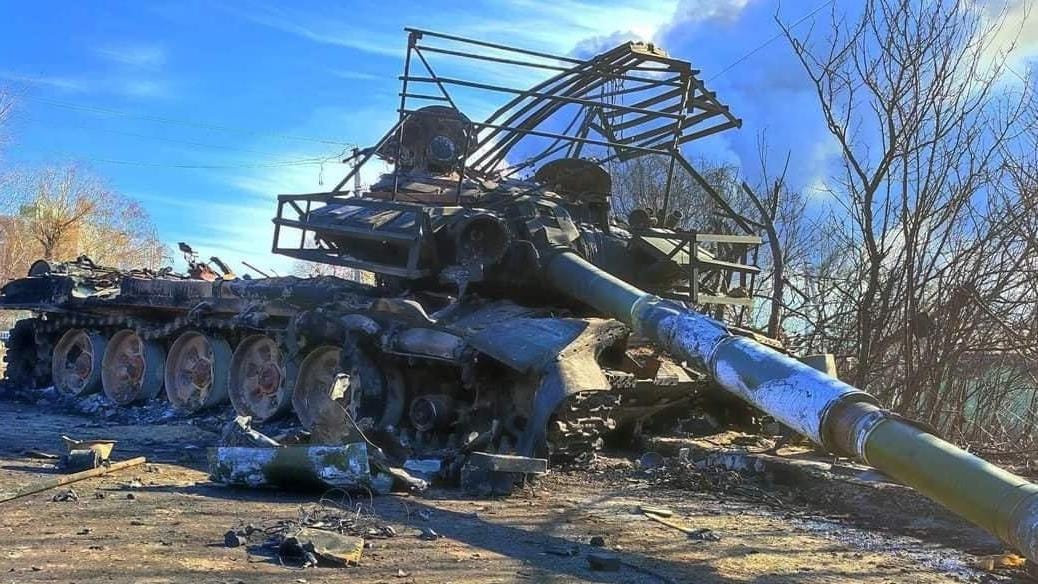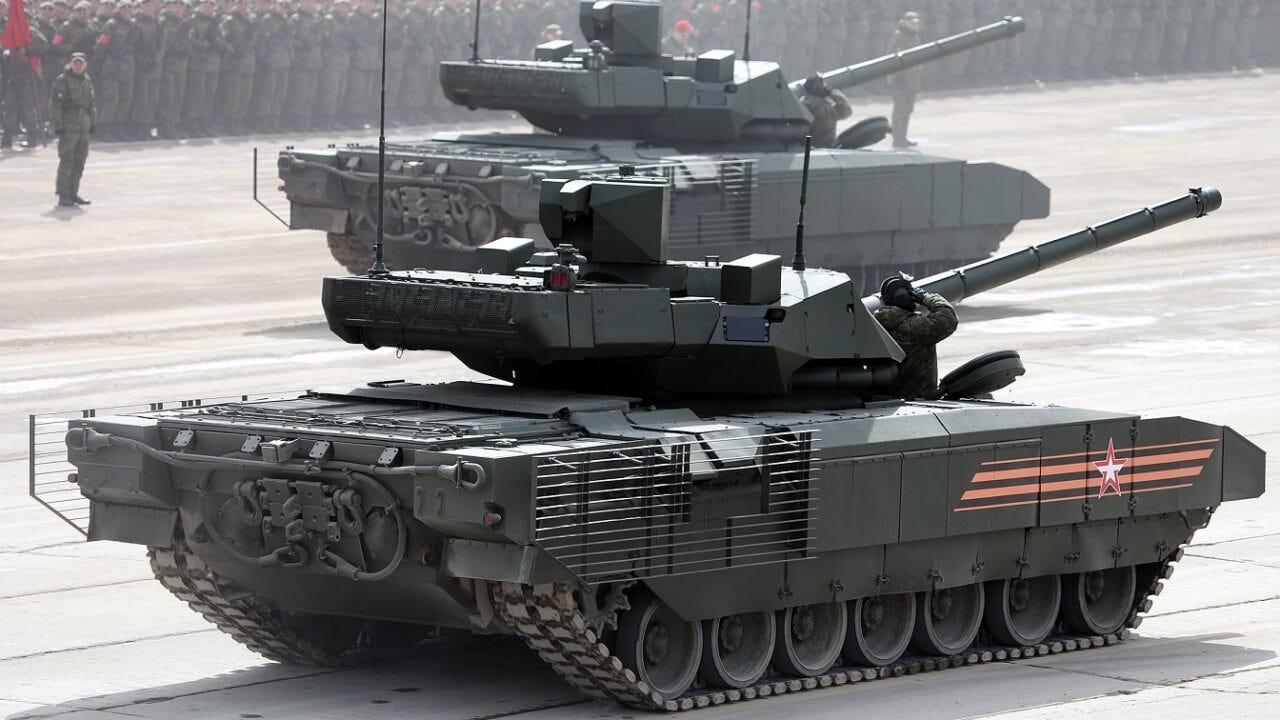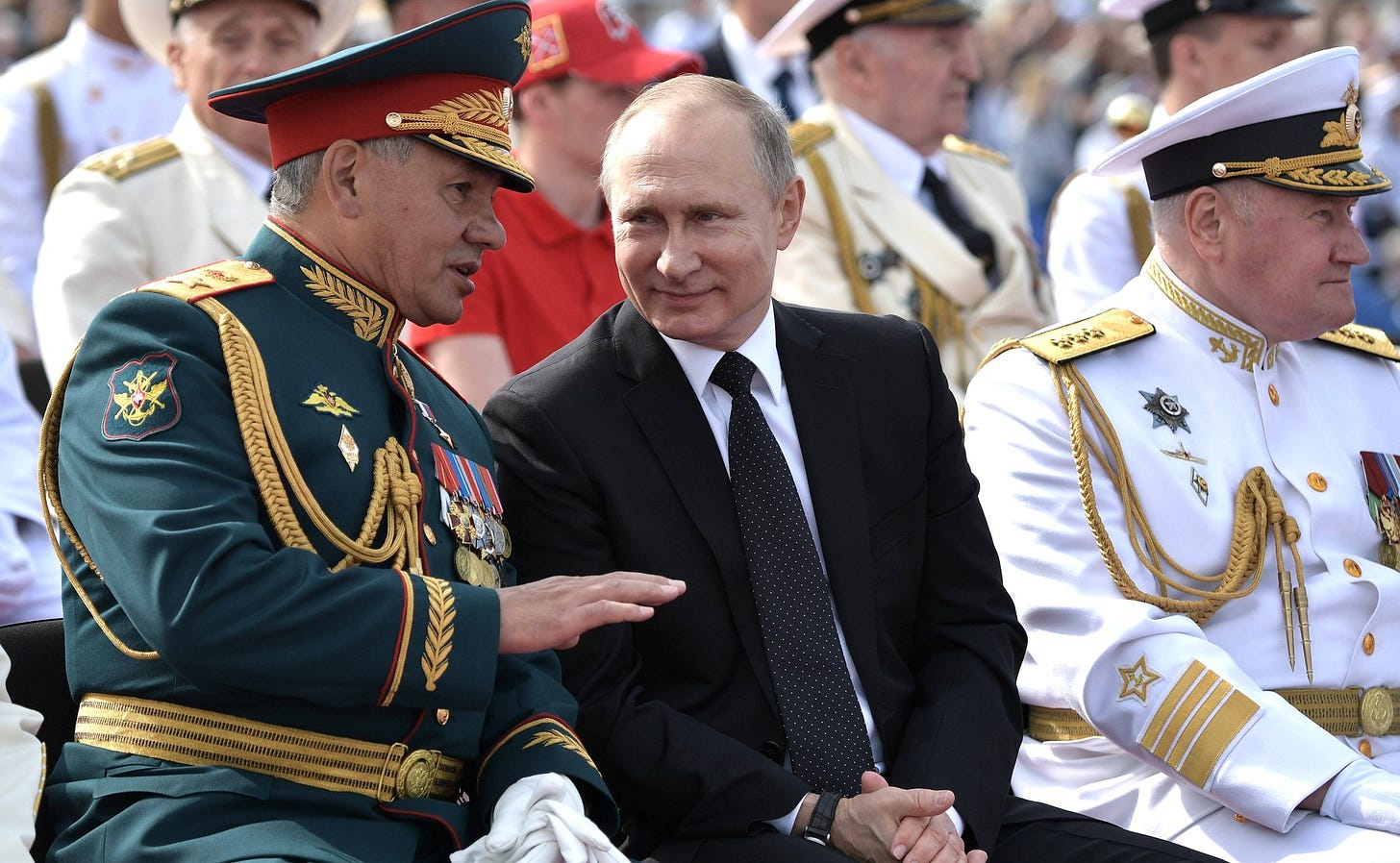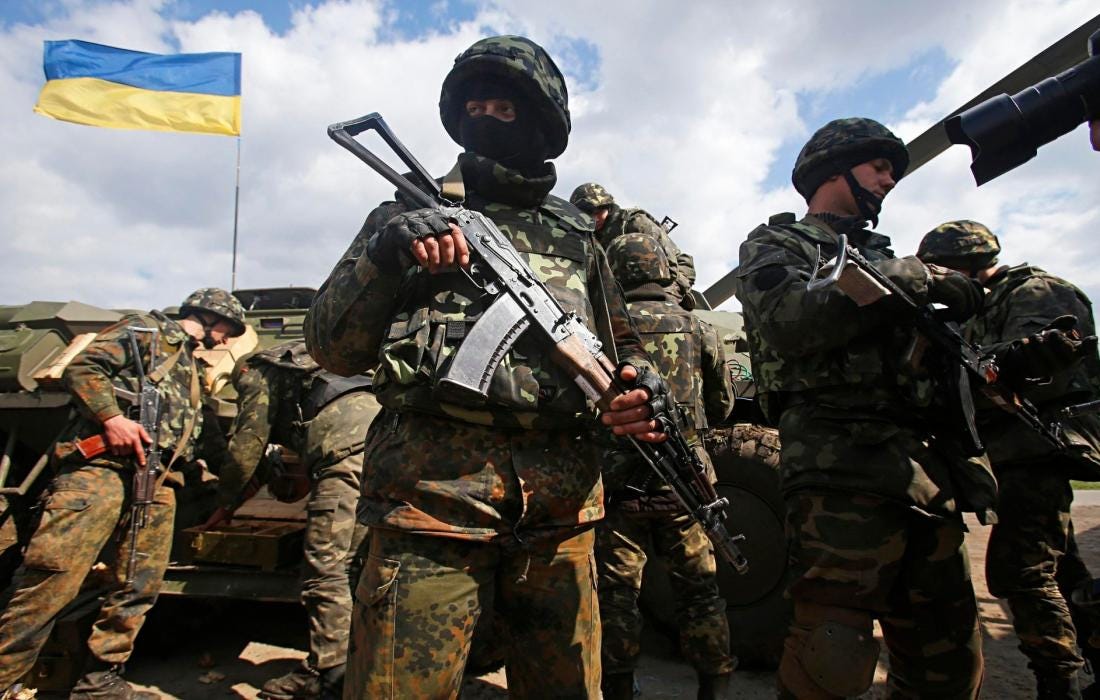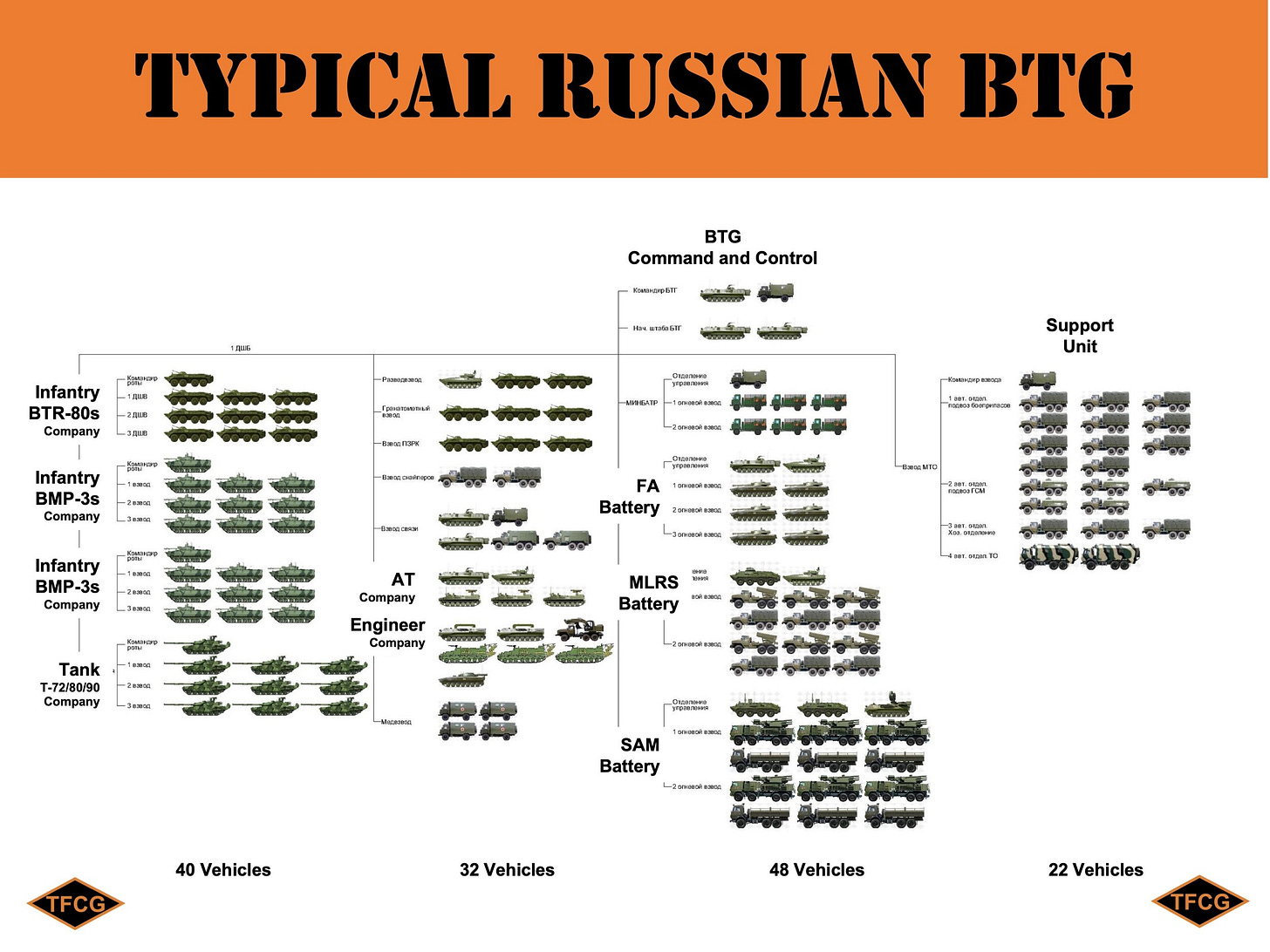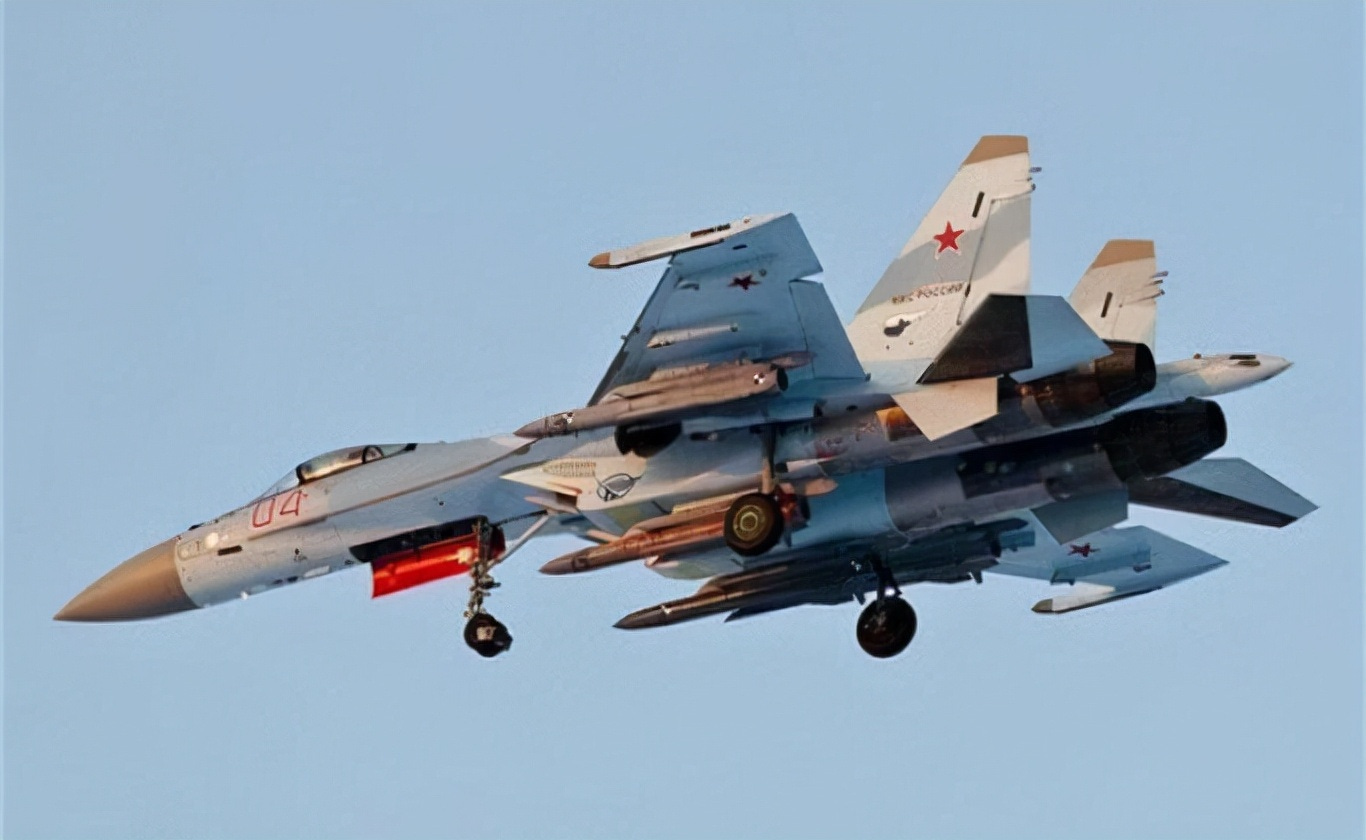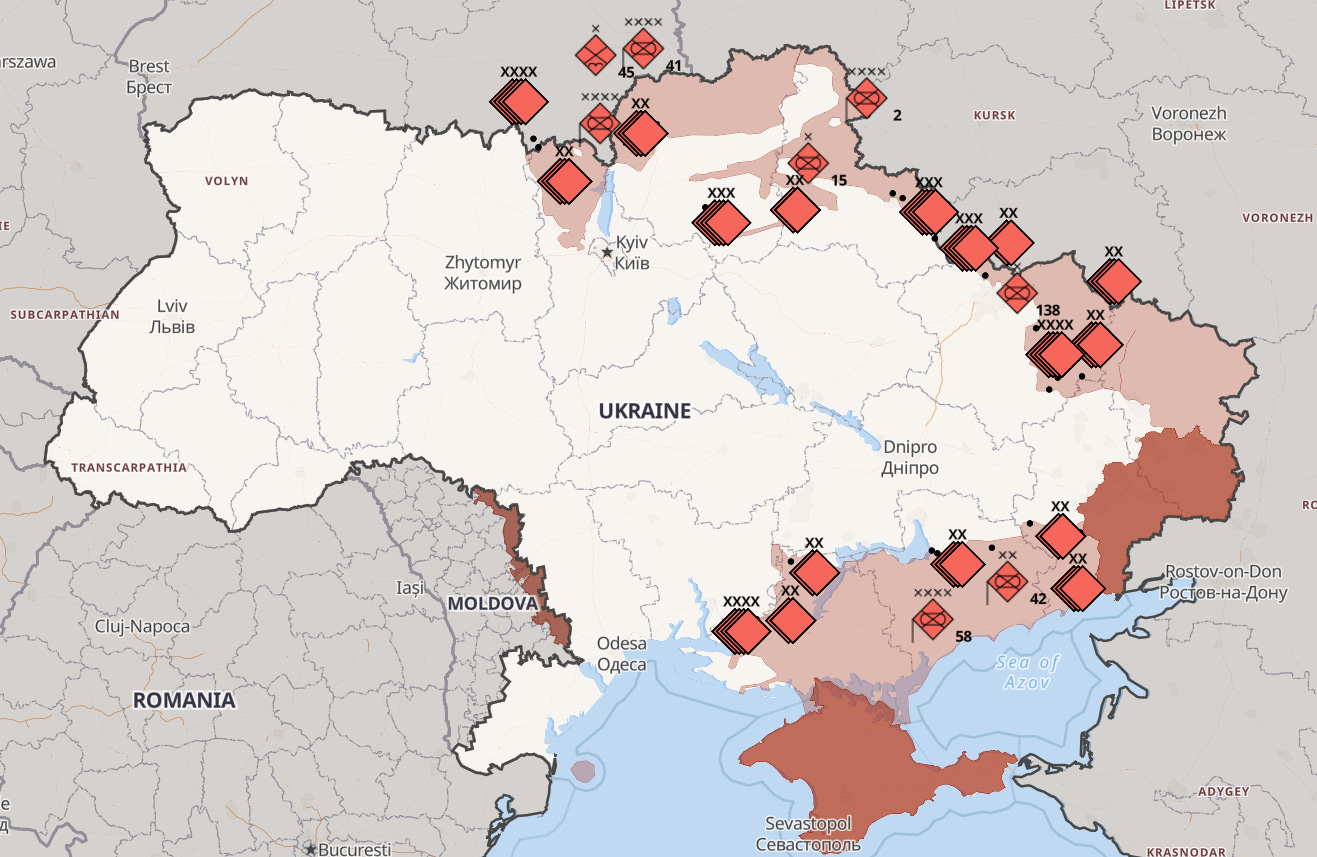Why Russia is losing: a primer on the war in Ukraine
The second strongest military on the planet is getting humiliated. This is why the outcome should not be a surprise.
More than a month after the Russia-Ukraine war began, a lot of people have been puzzled by the inability of the Russian military to win despite its overwhelming advantage over Ukraine. Some of the causes of this failure are now well known, such as the poor logistics and morale of the Russian army as well as the puzzling inability of the Russian Air Force to obtain air superiority. However, it is not often understood how these issues materialize into actual combat performance and especially how Russia’s material superiority has not been able to overcome them.
I hope this primer helps readers get a better view of how this war is being fought and what this means for the probabilities of each side in obtaining a victory now that the first phase of the war is over and Russia has shifted its overly ambitious war aims towards more limited objectives in the Donbas.
The Russian military’s half-baked modernization
In the days leading up to the invasion, the view that Russia would overwhelm Ukraine’s defenses in the first days of the war was almost universally held among most defense analysts and pundits. It was not hard to understand why: a quick glimpse of the two countries’ respective military capabilities showed a massive Russian quantitative and qualitative advantage. Russia, for example, enjoyed a more than 3:1 advantage in main battle tanks (closer to 5:1 when one considers those in storage), 5:1 advantage in armored vehicles, a 3:1 advantage in self-propelled artillery and rockets, and a 11:1 advantage in attack helicopters. In the air, the disproportion was just as vast, with a 15:1 advantage in fighters and tactical aircraft. It is estimated that Russia concentrated around two-thirds of its combat power to this operation, which meant that their ratios were still disproportionately high even when discounting those forces that were not earmarked for the invasion.
On the qualitative side, both sides notably use many of the same equipment such as T-80 and T-72 tanks, BMP-series infantry fighting vehicles, and BTR-series armored personnel carriers, as well as Su-27 and MiG-29 fighters and Su-24 and -25 ground attackers in the air. However, Russian variants are considerably more advanced than their Ukrainian counterparts as a result of recent efforts at modernizing their old Cold War-era stocks (the T-72 is a late 1960s design). However, this modernization effort belies the reason for it: Russia has simply been unable to build their modern designs in sufficient numbers to phase away the older ones. Its T-14 Armata tank, which Russian officials claim is the best in the world, was first shown to the world in the 2015 Moscow Victory Day Parade yet not a single one has deployed in an operation unit seven years later. Even the not-so-new-anymore T-90 has been seen only sporadically in Ukraine, compared with T-80s and T-72s.
Furthermore, these upgrades have not been applied across the entire inventories. Photographs of destroyed equipment show plenty of older, 1979-vintage T-72As which stand little chance against a modern anti-tank missile like the US-made Javelins or Anglo-Swedish NLAWs that have been supplied by NATO. But even the more modern variants like the T-72B3M have been shown to be extremely vulnerable to these weapons as well which is unsurprising since they were designed to defeat every Russian armor type and protection system in existence.
The intangibles
Perhaps one of the reasons why defense analysts thoroughly overestimated Russia’s military capabilities is because a major source of their weakness involves intangibles that cannot the properly assessed by looking at opposing orders of battle and equipment inventories. These include elements like command and control, logistics, and training. On paper, Russia’s military was indeed formidable, so much that a series of 2014/15 wargames organized by the RAND Corporation involving a Russian invasion of the Baltics had Russia winning all of them.
However, there was one key giveaway that Russia was much weaker than it seemed, especially on land. While on paper Russia has the army of a superpower (it even has more tanks and armored vehicles than the US plus thousands more in storage), it finances it with a military budget of a mid-tier NATO country like Britain or France. This means that Russia’s paper strength has to be maintained by cutting significantly on those other intangibles. These limitations were not so apparent when Russia conducted operations on a small scale, such as its 2008 invasion of Georgia, 2014/15 Crime and Donbas operations, or its 2015 intervention in Syria. But when it comes to organizing an invasion force of 190,000 men spread across five separate fronts in an area larger than France, these problems don’t just become apparent, they become fatal to your original invasion plan which saw the capture of Ukraine’s major cities and decapitation of its government in less than four days.
The budget problem is exacerbated by the fact that not only is it too small to maintain the army of a superpower but it also has to be used to maintain the world’s largest nuclear force (which dwarfs the already controversially expensive nuclear forces of say, Britain), and third-largest navy neither which have much role in this conflict. It’s air force, though much smaller than in Soviet times, is still respectably large and therefore expensive, especially since it also requires a large fleet of support aircraft like transports. Finally, the army’s reliance on internal railroad transport sucks up around one tenth of its manpower on railroad units and leaves preciously few logistics units for operations much beyond its forward depots. That the bulk of the forces earmarked to take Kyiv ended up bogged down barely 50 km from the border says everything you need to know of the Russian army’s inability to conduct maneuver warfare on such a scale (and hence why they tried to take the capital with a smaller number of fast moving elite troops first, but still failed).
Many of Russia’s problems with its intangibles may also be rooted in the country’s institutionalized corruption. It was made aware, for example, that some of Russia’s most expensive equipment like its Pantsir-S1 air defense vehicles ($13 million each) used cheap Chinese knock off tires and were poorly maintained. It is hard to believe that quality tires were not budgeted for such key equipment. It is also hard to believe that the rot doesn’t come from the very top. Russia’s defense minister, Sergei Shoigu is a government crony who wears a general’s uniform without having ever served in the military and owns an $18 million Buddhist-style compound. The Russian military’s nepotistic tendencies may also be evident by the fact that they have 2,205 general officers in their armed forces and security agencies. In contrast, the much larger US military has just 653 and this number is capped.
Indeed it is possible that Putin may not have been fully aware of his military’s limitations. Authoritarian regimes (not unlike corporations) are notorious for underlings too afraid to relay harsh truths to their superiors, including the commander-in-chief. Whatever the case, it is clear that Russia’s superpower ambitions have suffered in the face of some serious budget constraints as well as institutional rot across all elements of the state.
The Ukrainian military renaissance
I find it shocking that so many defense analysis fell for the paper might of the Russian military without bothering to question the many intangibles that suggested serious weaknesses. But I’ll be honest: I too would have bet before the invasion on Russia quickly defeating Ukraine. However, my logic would have been based less on a belief in Russia’s military might but on Ukraine’s military weakness. Ukraine’s military performed poorly in the battles around the Donbas in 2014-15, struggling against Russian-backed separatist forces and suffering a number of humiliating defeats such as the Battle of Ilovaisk in August 2014 when a Ukrainian force was encircled and annihilated by Russian regular troops that had crossed the border. As many as 420 Ukrainian troops may have died in that battle alone. A few months later in January 2015, Ukraine suffered yet another major debacle at the Battle of Debaltseve which also featured regular Russian troops assisting separatist forces. The complete stupor of Ukrainian units as Russian troops captured the Crimea in just a few days without firing a shot was also a lesson learned against an enemy who is master of the art of hybrid warfare and operational deception (maskirovka).
Those defeats would not be in vain. In 2016, the Poroshenko government enacted a major reform of the Ukrainian military which addressed deficiencies such as planning, operations, logistics, and command and control. They also benefited from substantial military aid and assistance from the West, which began supplying Ukraine with modern weaponry as well as training. One of the biggest changes was in the realm of tactical decision-making, where junior officers and NCOs were given sufficient leeway to take the initiative in the face of rapidly changing battlefield conditions rather than rely on orders from above. By and large, the Ukrainian military began resembling a modern NATO military far more than it did a Soviet-era relic, even though it still operated largely with Soviet-era weaponry.
These reforms, coupled with the military aid received since then, paid off handsomely. The Ukrainian army has shown considerably greater tactical proficiency than its enemy, repeatedly defeating the best that the Russians have thrown at it, including its vaunted VDV airborne troops as well as SOF and Spetsnaz special forces. In contrast, the Russian army has been widely mocked for its poor tactics such as these videos of a poorly coordinated armored column getting hit by Ukrainian artillery and tank fire, or one in which an infantry unit comes under fire in the middle of a highway, having clearly done no route reconnaissance or bothered to take out enemy firing positions on the way. To say nothing of the massive gap in morale between the two sides and the inherent benefit of fighting a defensive war in your own territory.
This disparity in tactical proficiency will not be reversed. Although Russian commanders will learn from many of their mistakes, it is unclear just how much flexibility they are being allowed or whether any improvement in tactics will be offset by the increased reliance on less-well trained troops. Russia is even seeking to bring in local fighters from Syria and the Central African Republic and it’s hard to imagine them being used for anything other than cannon fodder.
The battalion tactical group: a flawed concept
Now we get into the nitty gritty of military theory. One of the most important developments in recent military practice is the reduction of an army’s main independent maneuver unit from the division (around 10-15,000 troops) to the brigade (around 3-5,000 troops). NATO armies today are primarily brigade-oriented and these are the smallest units capable of operational independence, that is, without relying on support from a higher formation (in this case, divisions). Compared with divisions, brigades offer much greater flexibility and modularity to the force structure and are better suited for combined arms operations; that is, the coordinated use of different military units such as tanks and infantry.
Russia has gone one step further with its concept of Battalion Tactical Groups (BTG). These are around 600-1,000 men in size but unlike their Western counterparts have considerably more firepower and a wider variety of arms. Whereas Western battalions tend to be of the same type (say, an infantry battalion attached to a brigade), a Russian BTG includes a heavy armored component with tanks and infantry fighting vehicles, as well as its own formidable artillery and air defense systems. This makes the BTG a true combined arms unit, capable of undertaking a much wider variety of operations than a Western equivalent. While Russia still has plenty of its own brigades and divisions, the BTGs form the core of its offensive strength and it is estimated that around 120 of these are currently engaged in Ukraine.
There are, however, problems with this approach. While BTGs have shown their effectiveness in smaller scale encounters in Syria and the Donbas, they have some serious limitations when deployed on such a large scale as in Ukraine. Firstly, the combined arms nature of the BTG means that only a small number of losses in any one of its constituent arms severely erodes the combat efficiency of the unit as a whole. For example, a rule of thumb is that a unit is considered “destroyed” once it loses around a third of its men or equipment. This would be as little as just 3 tanks or 10 armored fighting vehicles for a BTG. Secondly, the logistics component of a BTG is also quite small, barely a platoon, for a unit that has considerably more vehicles and ammo requirements than a NATO equivalent. Finally, coordinating the different arms of a BTG requires leadership skills and training that the average Russian commander probably lacks even despite the transformation of the Russian military into a smaller, leaner, more professional force compared to the 4 million-man monster that was the Red Army when the Cold War ended.
The reliance on BTGs also means that the gap between Army-level commands and the units doing the fighting misses some important intermediate-level units that would otherwise be more effective. Air defense is a good example: the air defense batteries of a BTG are no substitute for an actual air defense battalion or regiment which would be better able to coordinate different batteries under its command over a larger area. This may largely explain why Russian air defense has performed so poorly despite being considered one of Russia’s most formidable assets, and even believed to be superior to NATO’s. In short, Russia hollowed out its order of battle and ended up with an army that is considerably less than the sum of its parts.
What happened to Russian air power?
One of the most stunning aspects of Russia’s military incompetence has been its failure at securing air superiority over Ukraine. One month into the conflict, the Ukrainian air force not only has survived but it remains mostly intact and still capable of undertaking offensive air operations. This is stunning given Russia’s massive numerical superiority which should have secured them control of the air from the very start of the conflict. Russia has also failed to knock out Ukraine’s air defenses which have been responsible for shooting down the majority of Russian aircraft (alas, the mythical MiG-29-flying “Ghost of Kyiv” is just that, a myth).
Make no mistake about it, had Ukraine been facing an equivalent NATO air force its air defenses would have been taken down in a matter of hours. Suppression of Enemy Air Defenses (or SEAD) is a NATO specialty and many of NATO’s bigger air forces have dedicated aircraft and units which train solely for this role such as the USAF’s “Wild Weasel” F-16CJs, the US Navy’s EF-18G Growlers, or the German and Italian Tornado ECRs. Almost all the initial air operations in recent conflicts such as the 1991 and 2003 wars against Iraq, as well as the 1994 and 1999 campaigns in the former Yugoslavia were SEAD missions which, once successful, essentially allow you to operate over the enemy’s airspace with complete impunity.
It does not appear Russia’s SEAD capabilities come remotely close. Its anti-radar missiles like the Kh-58 and Kh-31P are bigger and clunkier than their NATO counterparts like the AGM-88 HARM and likely much less accurate. While I admit to being unfamiliar with the details of Russian SEAD doctrine, I have gotten the impression that it has changed little from Soviet-era practice which was to have certain aircraft in each squadron capable of these operations though not specializing in them. Russia’s inability to take out Ukraine’s air defenses has thus proven to be a costly failure. Recent losses of pricey new Su-30s and Su-34s are a big deal for an air force that has struggled to design new aircraft (most new Russian aircraft are glorified variants of the 1980s-era Su-27 Flanker) much less field them in large quantities. Their large fleet of strategic bombers has also been largely grounded, and only used sporadically to launch long-range cruise missiles from the safety of Russian airspace. Russia has not been able to undertake the indiscriminate aerial bombardment it unleashed against Aleppo in Syria not because it won’t but because it can’t.
It is also likely that Russia did not have the necessary training to conduct air operations on a large scale. Training a modern air force is expensive, and for non-Western nations often prohibitively so. It is estimated that a single flight hour in a Su-27/30/35 costs $10,000 and this is the reason why Russian pilots only have 100-120 hours of flight training a year compared to 180-240 for a NATO pilot (talk to any one of them and they’ll say it’s not enough!). In a theater of war like Syria where you are facing no enemy air opposition, you can largely get away with textbook tactics that aren’t subject to the uncertainties of combat. Not so much in Ukraine where the Russian air force must operate in a high-threat environment, coordinating not only an air battle involving 300+ of its own aircraft but also offering tactical support to ground operations across five separate fronts.
What next? The upcoming battle for the Donbas
Over the past few days, the Russian military has begun what appears to be a coordinated retreat from the Kyiv, Sumy, and Mikloayiv areas. It is highly unlikely they will reattempt offensive operations in these three regions anytime soon. Russia’s main push now will come from the Donbas region (known to the Ukrainian military as the Joint Forces Operation or JFO area) which thus far has been somewhat of a secondary theater despite the substantial array of forces lined up against each other: it is estimated that around 40,000 Ukrainian troops including some of their best brigades, battle-hardened after 8 years of combat against separatists, are facing a similar-sized number of Russian-equipped troops from the Donetsk and Luhansk People’s Republic (or DPR and LPR for short), soon to be reinforced by a considerable number of Russian units from other fronts and from the interior.
Russia’s strategy will probably be similar to what they may have attempted but failed at the start of the war: to encircle this mass of Ukrainian forces and destroy them, with a pincer moving north from the Zaporizhzhia-Donetsk axis and another moving south from the area east of Kharkiv. This will be easier said than done. For starters, the attrition rate among Russian units has been considerable and will weigh in significantly on their combat effectiveness. Secondly, it is likely that Ukraine will also be able to shift some of its maneuver units from formerly contested regions like Kyiv in order to bolster their defenses in the Donbas. Thirdly, the terrain and climate will once again favor the defender. This part of Ukraine features some of the densest concentration of urban settlements in the country and the inevitable arrival of the spring mud will compound Russia’s existing logistical troubles. Finally, the arrival of more Western arms such as Switchblade UAVs and Starstreak anti-aircraft missiles in addition to the potential transfer of heavy weapons (such as T-72 tanks which a few NATO countries like Poland still possess) suggests that the Ukrainian military will be in a good shape to resist the upcoming onslaught.
That said, though my bet is that Russia’s second phase of this war will be no more successful than the first, to discount a Russian victory would be incredibly foolish. Russia still possesses tremendous firepower and a considerable pool of men and material to continue offensive operations on a sustained basis. We are also somewhat in the dark about the state of the Ukrainian military. While it has not suffered nearly as many losses as the Russians, it is likely they have lost more material as a percentage of their original stocks, although this has to be netted out with the substantial number of vehicles in working order they have captured plus what they have received from the West. Ukraine’s main problem, however, remains that its maneuver units are stretched thin and any reinforcement of its Donbas troops will come at the expense of its defenses elsewhere. This has largely prevented it from having a reserve of brigades that could be used, for example, to attempt to relieve Mariupol.
Whatever happens during this second phase will largely determine who will have the stronger hand in the negotiating table as the major combat phase draws to a close likely at some point in May. Russia could still be capable of extracting significant concessions, perhaps even territorial concessions, particularly if it manages to capture Mariupol (whose strategic significance in Russia’s territorial ambitions cannot be understated). On the other hand, if Ukraine stops Russia’s Donbas offensive cold, it is unlikely Russia will be able to leave this war with even a symbolic victory. Much will also depend on how the Russian economy manages to survive until then, and how strong is the resolve among Western countries to keep sanctions or even intensify them until Russia commits to a full withdrawal.
Until then, the next month or two will see more horror, more destruction, and more death. But what has happened since February 24th should leave no doubt: an independent Ukraine will continue to exist longer than Vladimir Putin.
Did you like this article? Follow me on Twitter at @raguileramx and on YouTube at ProgressumTV. You might also like my book, The Glass-Half Empty: Debunking the Myth of Progress in the Twenty-First Century (Repeater Books, 2020). My security-related work has appeared in The Military Balance, Armed Conflict Survey, and Strategic Survey from the International Institute of Strategic Studies.

